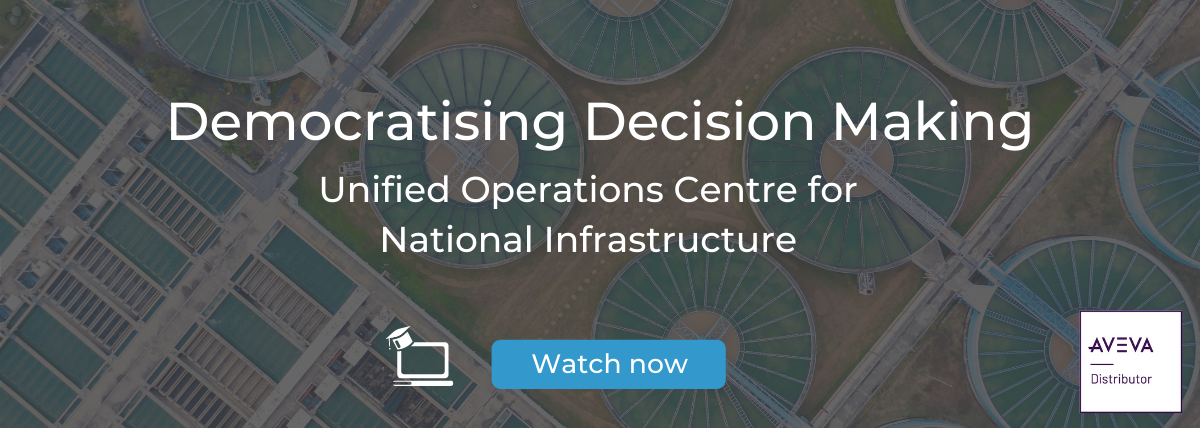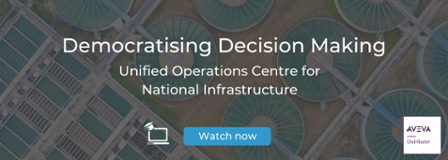What are data silos and why does it affect water/wastewater so much?
A data silo occurs when you have two (or more) different systems running side by side but relating to the same overall process or piece of equipment/asset. Each management system is providing information relating to that process/asset independently but lacks the ability to contextualise information from the other system(s) in a meaningful way.
A data silo occurs when you have two (or more) different systems running side by side but relating to the same overall process or piece of equipment/asset. Each management system is providing information relating to that process/asset independently but lacks the ability to contextualise information from the other system(s) in a meaningful way.
A simple example of two systems running in this way could be a CCTV system trained at a pumping station asset at a water/wastewater treatment plant, and an asset management software platform that provides a digital view of the same pumping station asset.
Add in SCADA software that is used to control that pumping station remotely, and an analytics package that is carrying out predictive failure analysis for that pump, and you have silos number 3 and 4 respectively.
There are many silos of information that exist within a typical industrial data warehouse setting. This makes it difficult to share data and contextualise information across the enterprise to improve decision making concerning efficiency, productivity, or maintenance.
Information silos are not unique to the water/wastewater industry but can be especially problematic when coupled with sector-specific challenges such as the geographical dispersal of high-cost assets and high-value people, extensive legacy plant and strict environmental regulations.
At a time of a growing population and urbanisation across the country, the need for water/wastewater management to streamline operations and reach new sustainability goals has never been more pressing.
Achieving end-to-end operational visibility
A common issue in water/wastewater is too many systems, provided by a multitude of vendors and service providers, assembled over an extended period.
Each system works independently of the others, making integration impossible and denying managers a view of operations that represents a single version of the truth.
Any business owner will tell you, without access to an accurate understanding of assets and their utilisation, it is impossible to make company-wide improvements. That is without mentioning the added stresses on operators of a multitude of complex systems that require them to master multiple operating protocols and work with several different user interfaces to complete some of the most basic tasks within their role.
So, why don’t water/wastewater companies solve this issue?
Simply put, it’s a costly one. Ripping and replacing existing technologies, such as SCADA systems or telemetry systems, would require a large cost and time investment. And, while this approach would likely be effective if undertaken strategically, it’s not usually necessary while existing systems are operational and have life left in them.
This is because in most instances the existing systems are doing what they should do, and the problem concerns extracting and contextualising the data already available in a timely and cost-effective way that allows for better decision making.
The Unified Operations Centre for water/wastewater
Bringing end-to-end operational visibility across water/wastewater enterprises without a rip-and-replace approach to legacy technologies is made possible through The Unified Operations Centre (UOC) from AVEVA.
Based on a system of systems approach, the UOC addresses the converging worlds of IT and OT by bringing all the technology under each discipline into a single manageable location. With an overall perspective now possible, operators can visualise all data and turn it into actionable real-time intelligence.
The workforce is now empowered with the ability to make faster and more informed decisions on all process and non-process functions. This includes all the sub-systems that can affect operations such as power, potable and non-potable water, treatment, metering, and environmental systems.
Improving efficiency across geographically dispersed assets requires a digital connection, something the UOC can provide with added functionality for the control room.
Starting with a map-based perspective, operators have a global asset overview with the ability to drill down into station-level overlays before examining specific equipment. This means that no matter how spread the high-value people of the organisation are, they can securely access a 360-degree view of operations, whether they are in the office or on the road.
Another pressure felt by all process industries, but one that particularly impacts water/wastewater is energy usage. Whilst Energy Consumption can be monitored and predicted using software solutions, the inability to contextualise this with Asset Health, Asset Maintenance Records, Site SCADA, and other OT systems means energy consumption is not being optimised as much as it could be.
Digital Transformation empowering the human workforce
In the era of digital transformation, many important and powerful new digital tools are being adopted across industry. Some sectors are further ahead than others, and many technologies now widely adopted have proven themselves.
For any business, establishing a single version of the truth is a surefire way to improving efficiency. For the water/wastewater sector, it is integral to meeting unique challenges and future-proofing operations.
Working with experienced digital transformation partners like our team at SolutionsPT allows enterprises to adopt a software and hardware agnostic approach, meaning a UOC can be brought to bear alongside current and legacy assets while offering seamless future integration with any new equipment that is added to the network.
Water/wastewater leaders are always looking for ways to better serve their customers and shareholders while meeting ever more stringent regulatory requirements.
The best and most cost-effect way to do this is to leverage the data that is already available and empower the most essential element of any operation - the human workforce - with digital tools that offer improved, contextualised information that enables a step-change in efficiency, maintenance, and profitability while reducing waste.
See how the Unified Operations Centre can help simplify information management, improve situational awareness and empower decision making at your facility by watching our webinar, Democratising Decision Making


